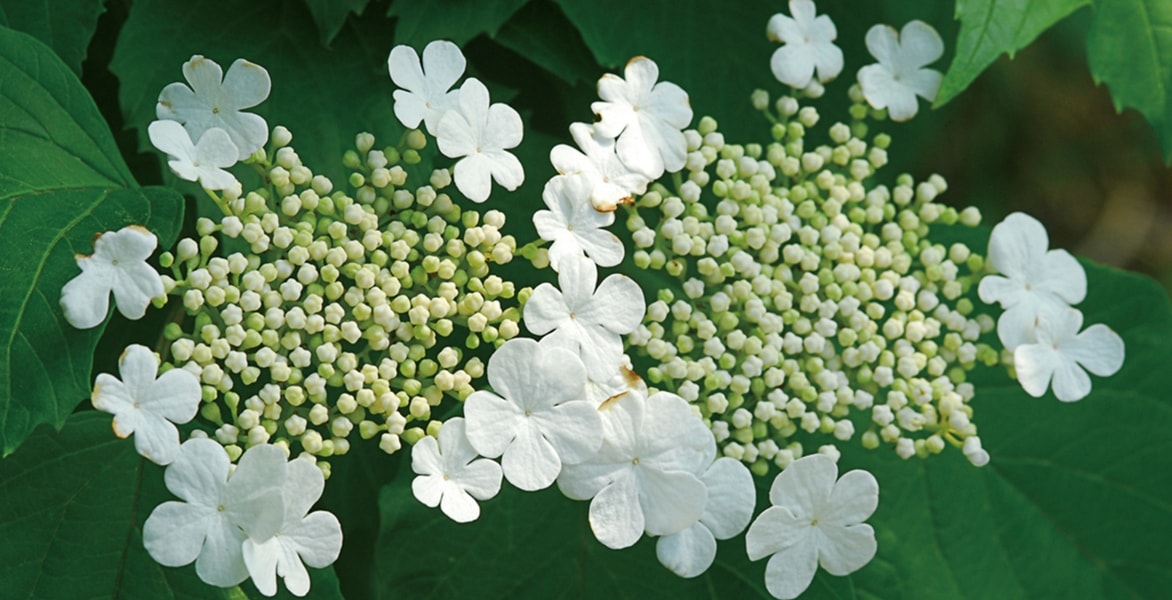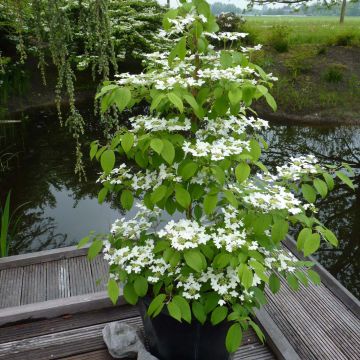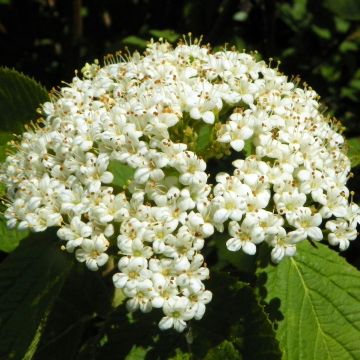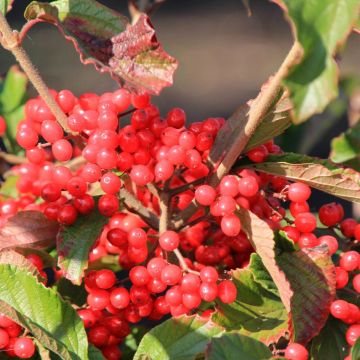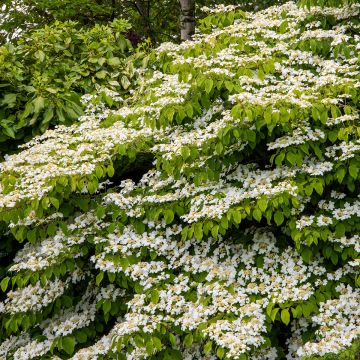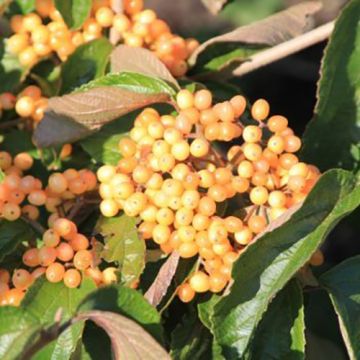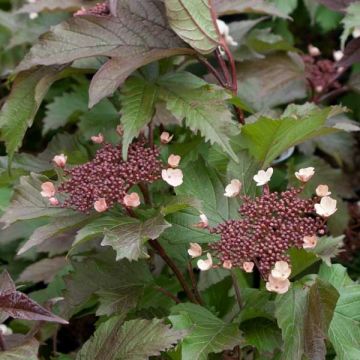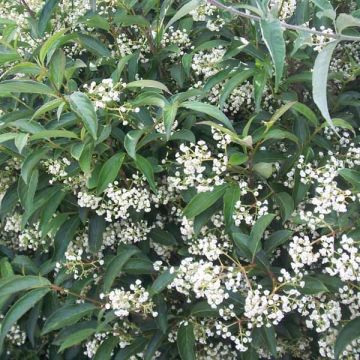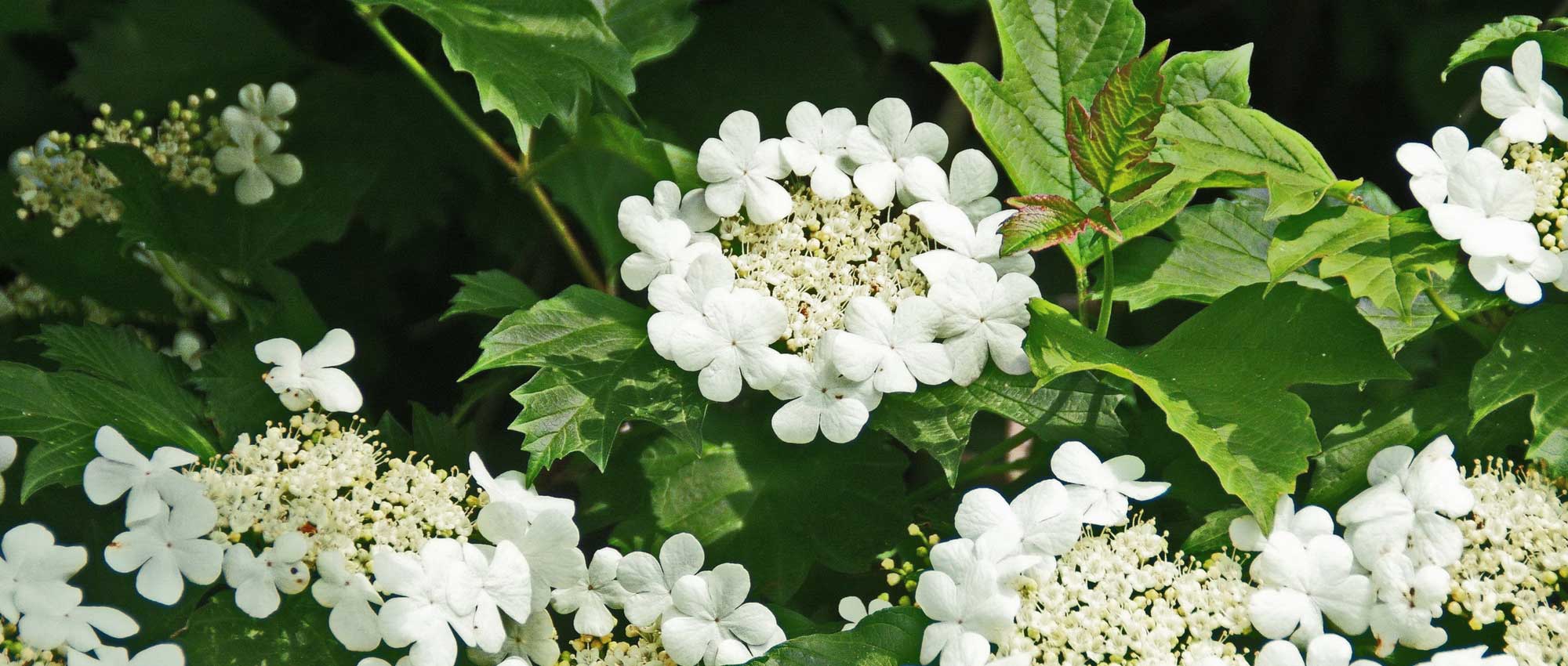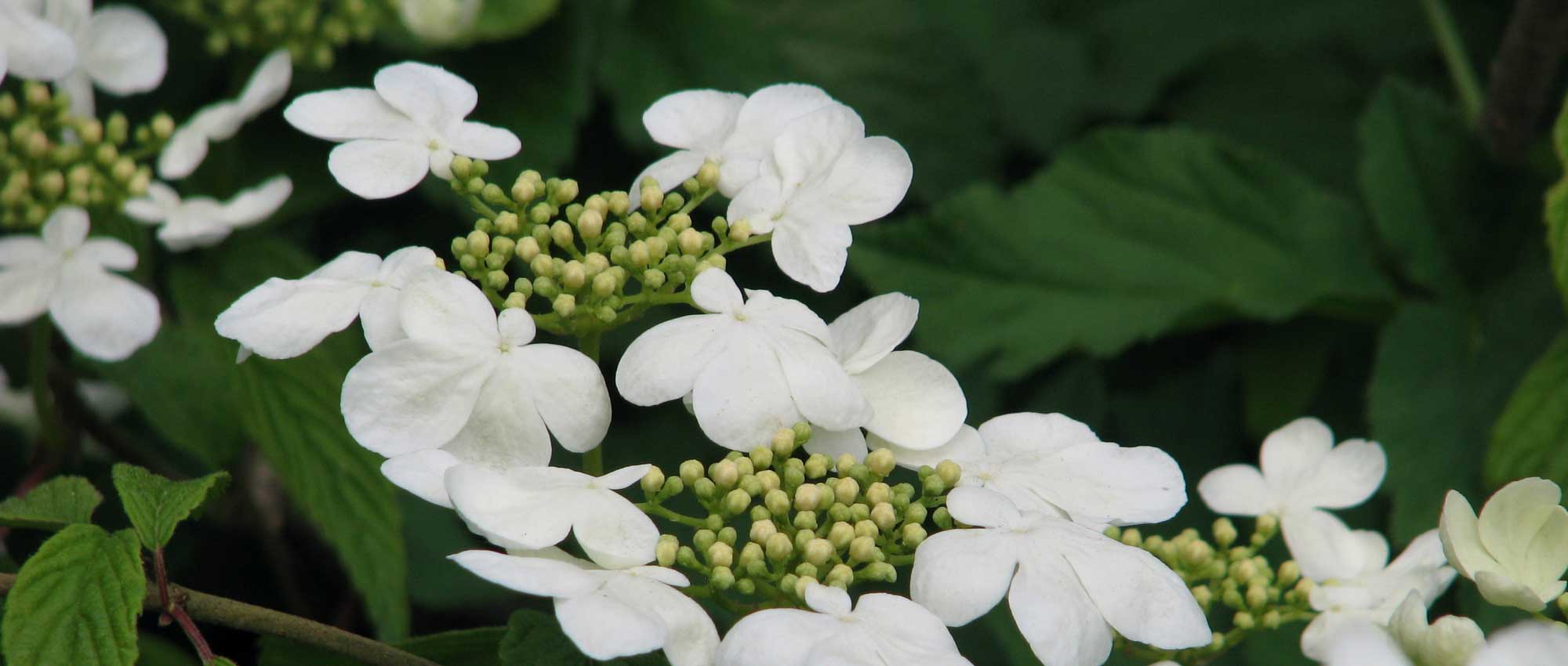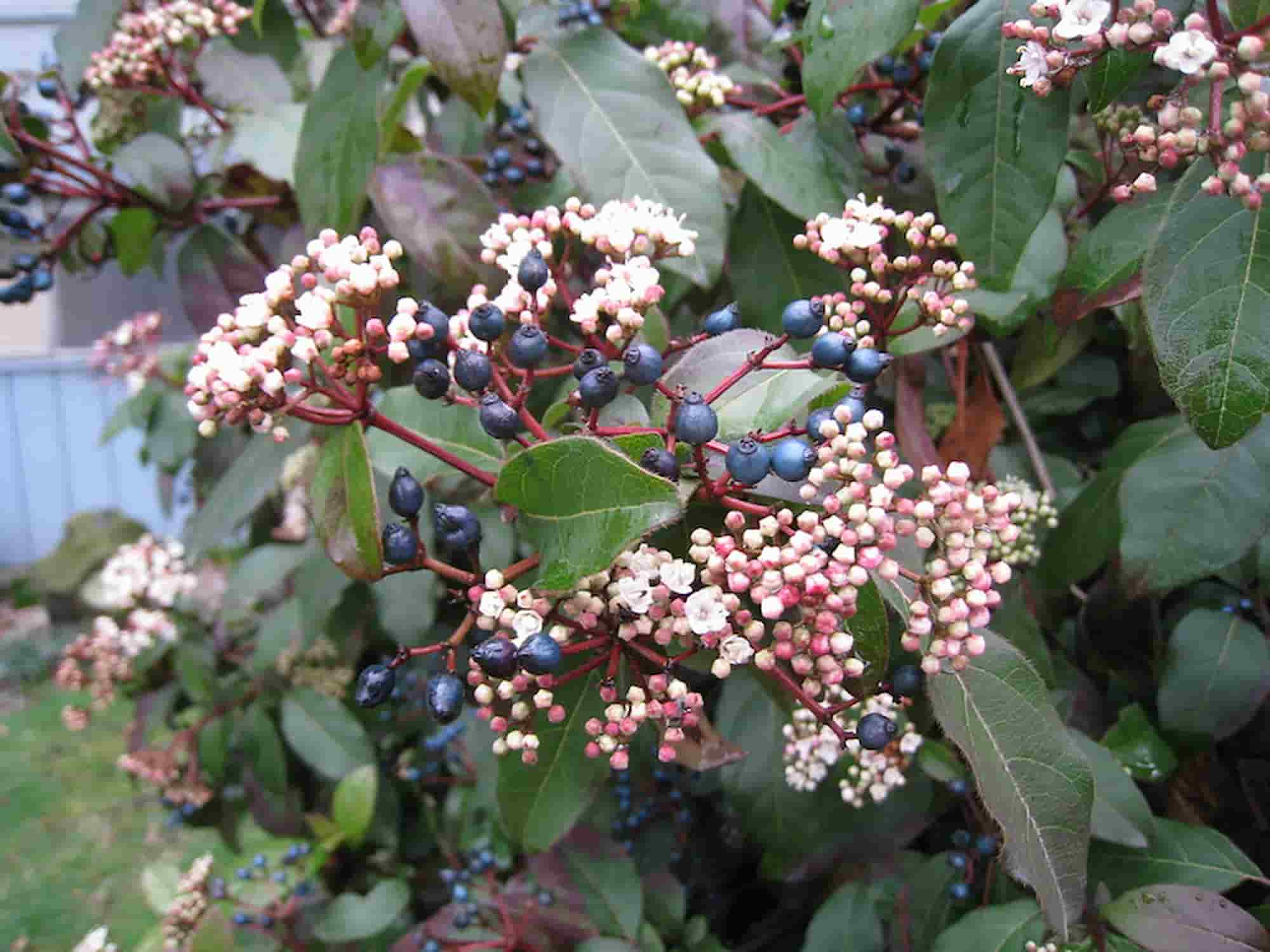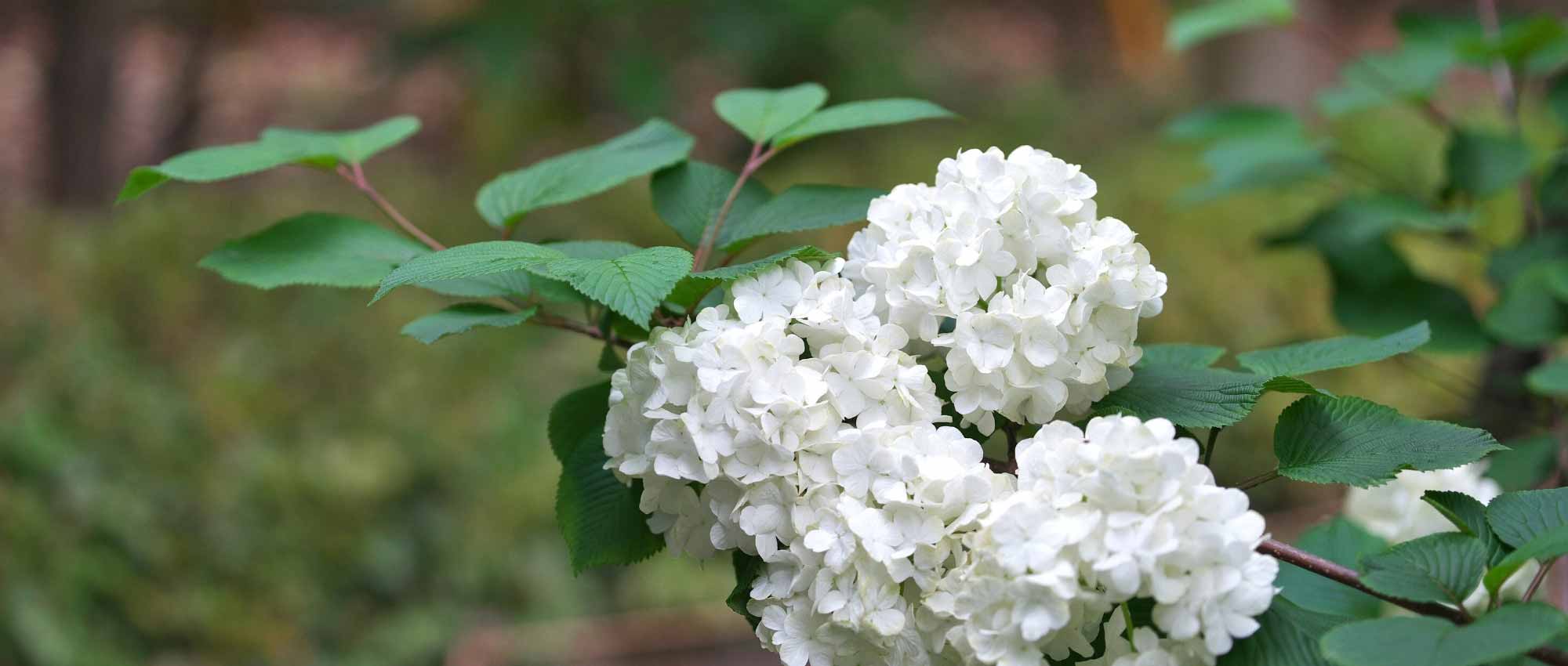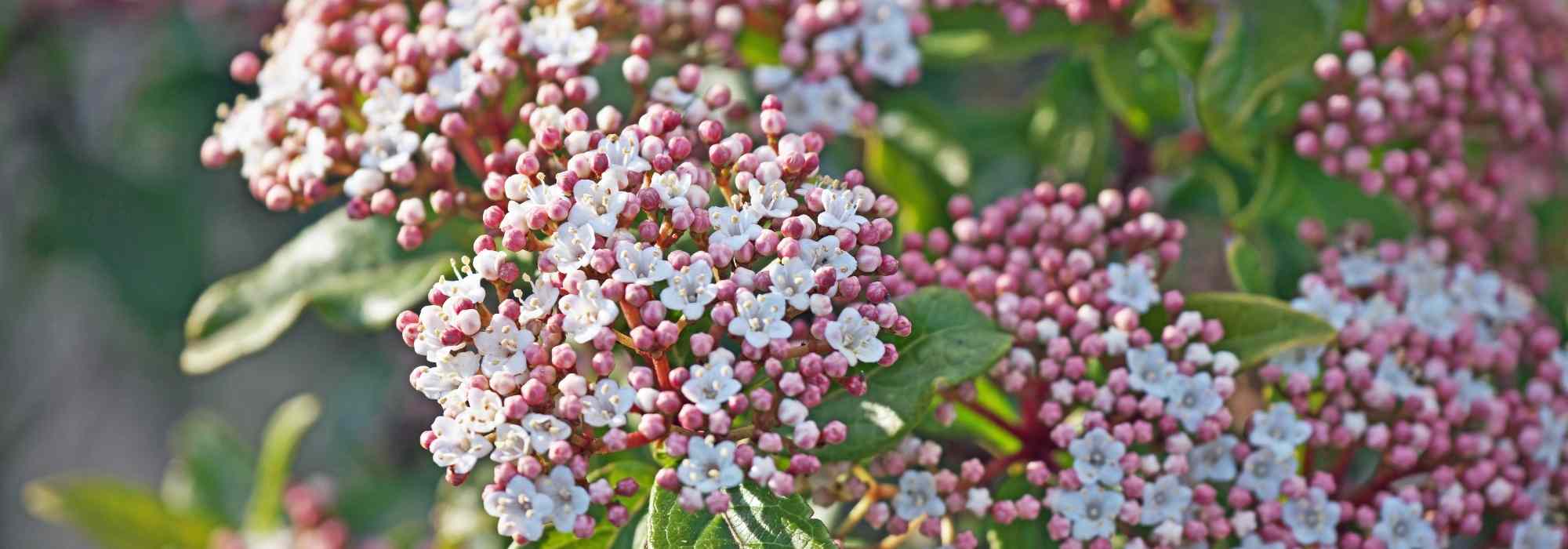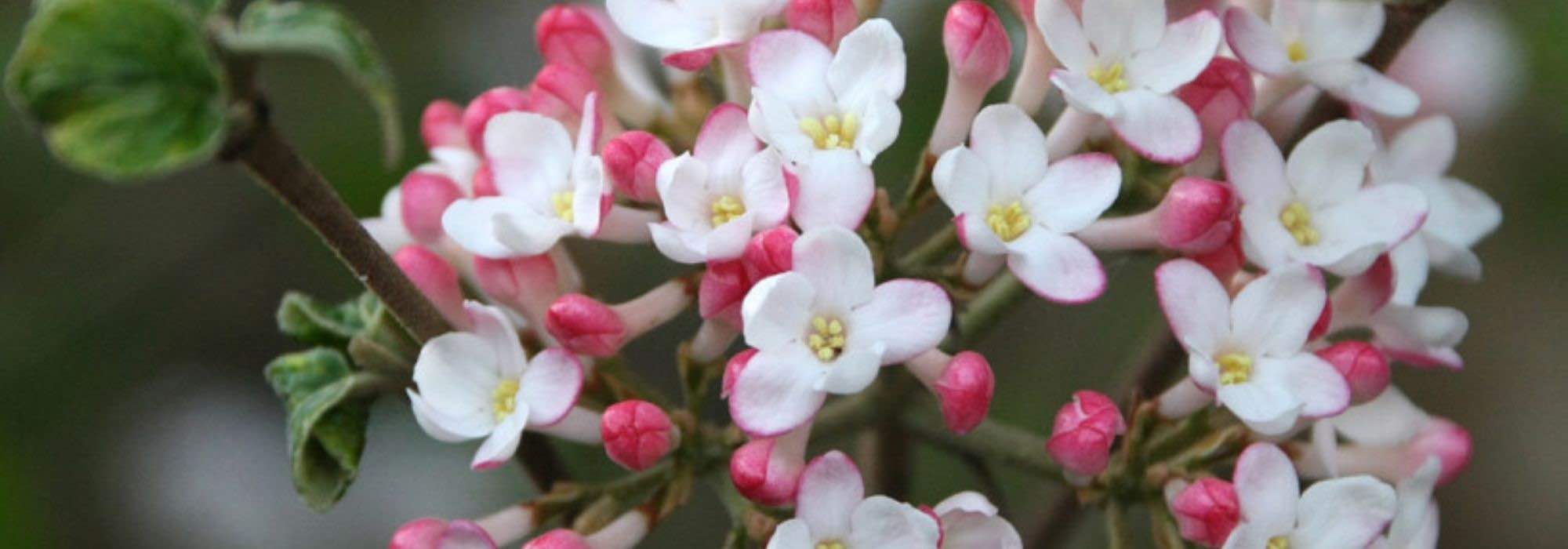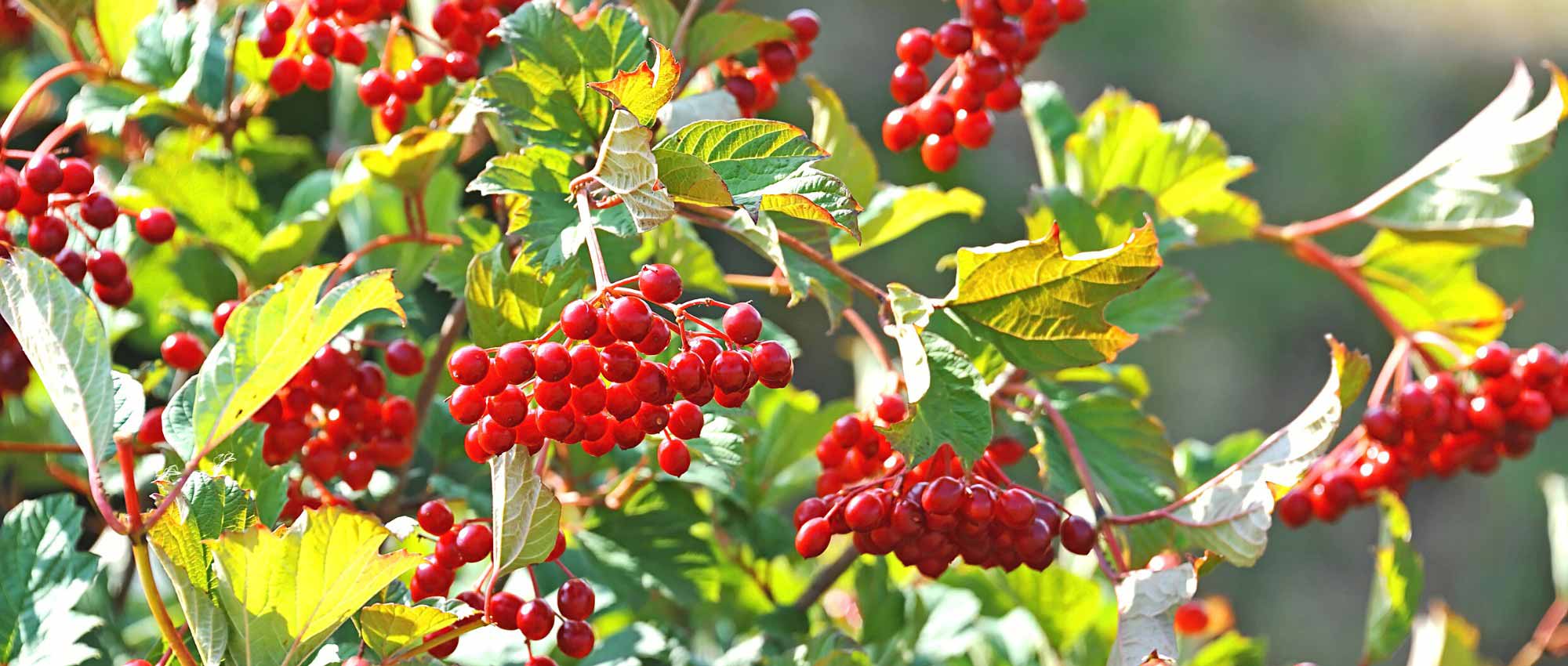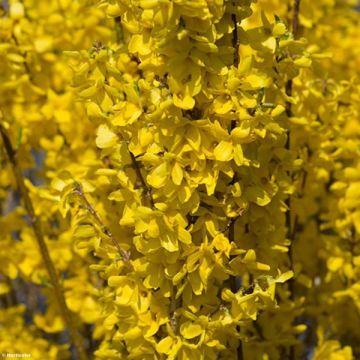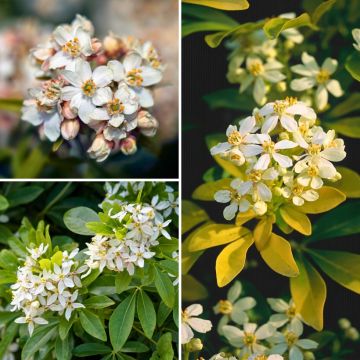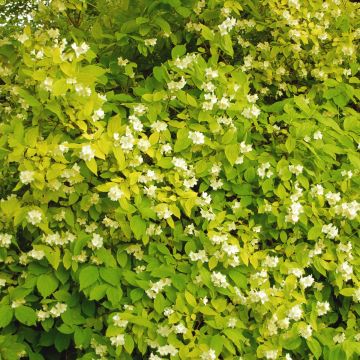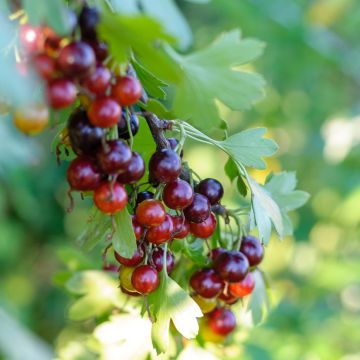

Viorne trilobée - Viburnum trilobum Bailey Compact®
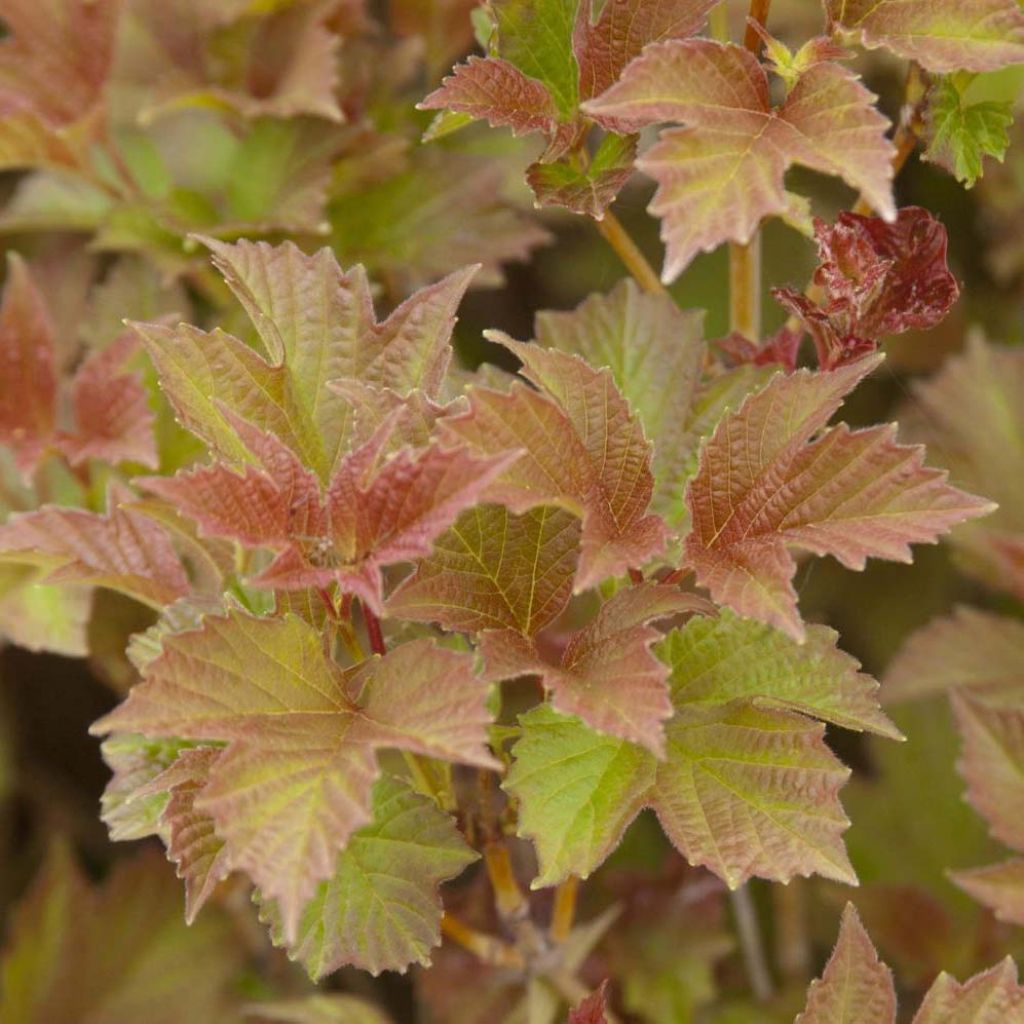

Viorne trilobée - Viburnum trilobum Bailey Compact®
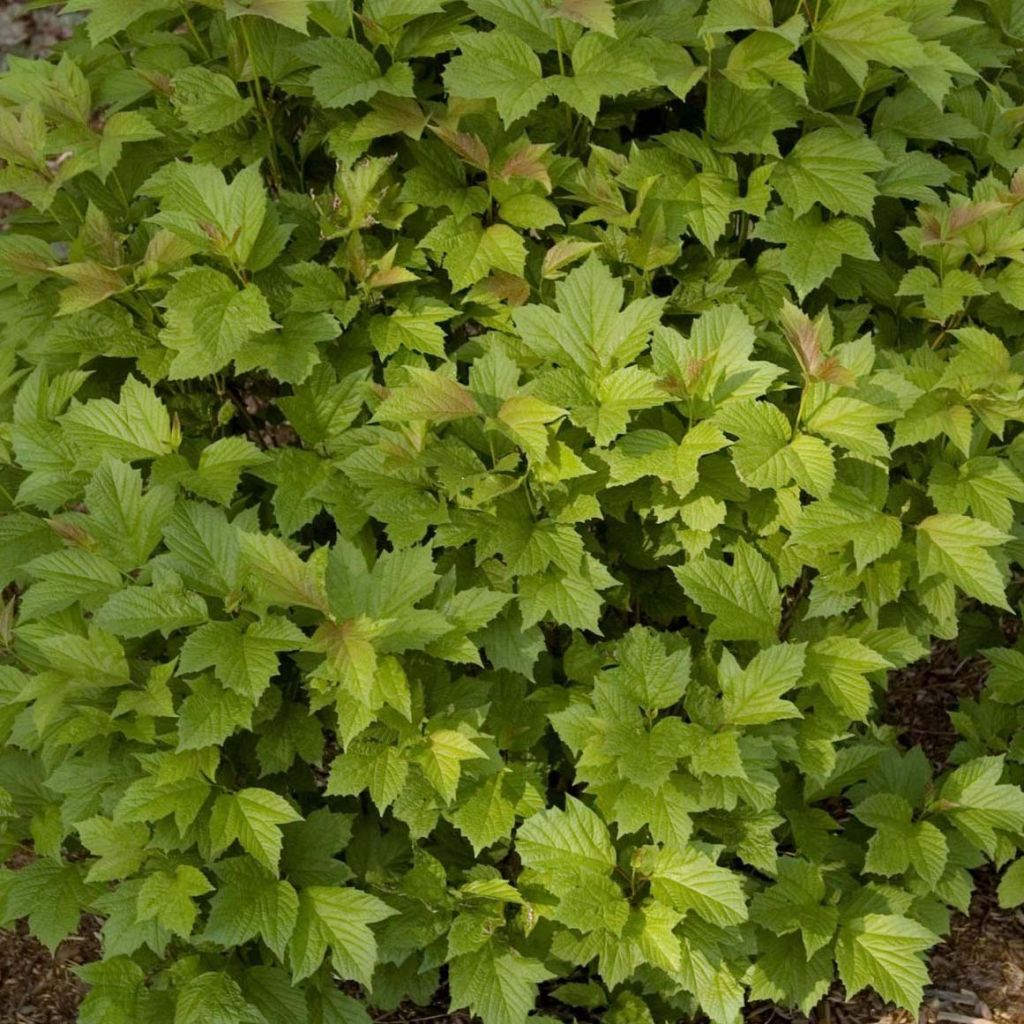

Viorne trilobée - Viburnum trilobum Bailey Compact®
Viburnum trilobum Bailey Compact
Viburnum trilobum Bailey Compact®
American Cranberry Bush, High Bush Cranberry, Cranberry Viburnum
Following my first 2 comments: my 3 viburnum trilobum "Bailey Compact" (of which 1 died but it was my fault: I had chosen its location poorly) have grown satisfactorily. Their growth is rather slow but they have still branched out and thickened. They are all in partial shade, in flowerbeds, and well mulched at the base... which finally seems to suit them perfectly (after a somewhat delicate recovery and 2 changes of location). They have not yet produced any flowers or fruits as they are still small...... but I confirm that their autumn foliage is spectacular, with shades of yellow, orange, and red. Since that was the main reason that motivated me to buy them, I am delighted. :)
Rebecca, 08/01/2022
Special offer!
Receive a €20 voucher for any order over €90 (excluding delivery costs, credit notes, and plastic-free options)!
1- Add your favorite plants to your cart.
2- Once you have reached €90, confirm your order (you can even choose the delivery date!).
3- As soon as your order is shipped, you will receive an email containing your voucher code, valid for 3 months (90 days).
Your voucher is unique and can only be used once, for any order with a minimum value of €20, excluding delivery costs.
Can be combined with other current offers, non-divisible and non-refundable.
Home or relay delivery (depending on size and destination)
Schedule delivery date,
and select date in basket
This plant carries a 24 months recovery warranty
More information
We guarantee the quality of our plants for a full growing cycle, and will replace at our expense any plant that fails to recover under normal climatic and planting conditions.

Would this plant suit my garden?
Set up your Plantfit profile →
Description
Viburnum trilobum Bailey Compact is a variety of High Bush Cranberry that has retained the robust character of the North American species, while focusing its qualities on a compact and remarkably colourful shrub. A charming plant, it offers in early summer a few white flowers gathered in flat-topped clusters, soon replaced by pretty clusters of red currants, which are all the more ornamental as they persist for a long time on a transfigured autumn foliage, invaded by orange and then crimson-purple. This fruit pleases birds, but also humans who can consume the berries like cranberries.
Native to Canada and the northern United States, Viburnum trilobum is a deciduous shrub extremely resistant to cold and wet soils. It thrives in any good garden soil that is not too dry. Formerly classified in the Caprifoliaceae family, it now belongs to the Adoxaceae family. The Bailey Compact variety, recently discovered at Bailey Nurseries in Minnesota, stands out for its much more modest growth but also for a more timid flowering, which is largely compensated by fabulous autumn colours.
The plant forms a bushy clump reaching about 1.5 m (5 ft) in all directions, with a fairly rapid growth. The branches are grey and slightly arched at their tips. Flowering, which is not very abundant, begins at the end of May or the beginning of June. White in colour, it takes the form of flattened clusters at the end of the branches. On each inflorescence, the larger sterile flowers surround a small centre composed of fertile flowers in the shape of buds. This flowering is followed by beautiful fruiting that persists until winter on the bush. The shiny red fruits attract birds that will brighten the shortest and saddest days of the year. Its foliage is deciduous, with leaves divided into 3 lobes (hence the name of the plant) that are 5 to 10 cm (2 to 4 in) long, with strongly marked veins.
Hardy well below -15 °C (5 °F), Viburnum trilobum Bailey Compact thrives in a sunny location to enhance its autumn colours, in ordinary but moist soil. It is mainly used in low mixed hedges or shrub beds. In this setting, it will accompany other viburnums with staggered flowering (V. lantana, V. x bodnantense, V. x burkwoodii), deciduous euonymus, or a Cotinus for autumnal flamboyance. This champion of hardiness allows for the creation of a very pleasant countryside atmosphere in the company of native plants such as medlar, hazelnut, hawthorn, Prunus mahaleb, blackthorn, or hedge honeysuckle, etc.
Viburnum trilobum Bailey Compact in pictures
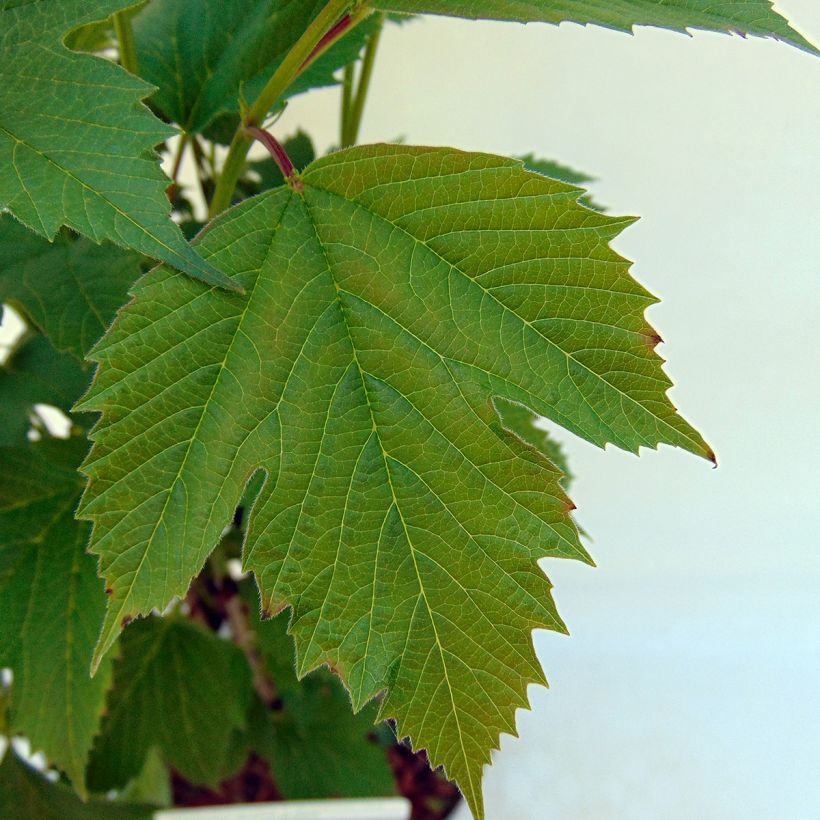

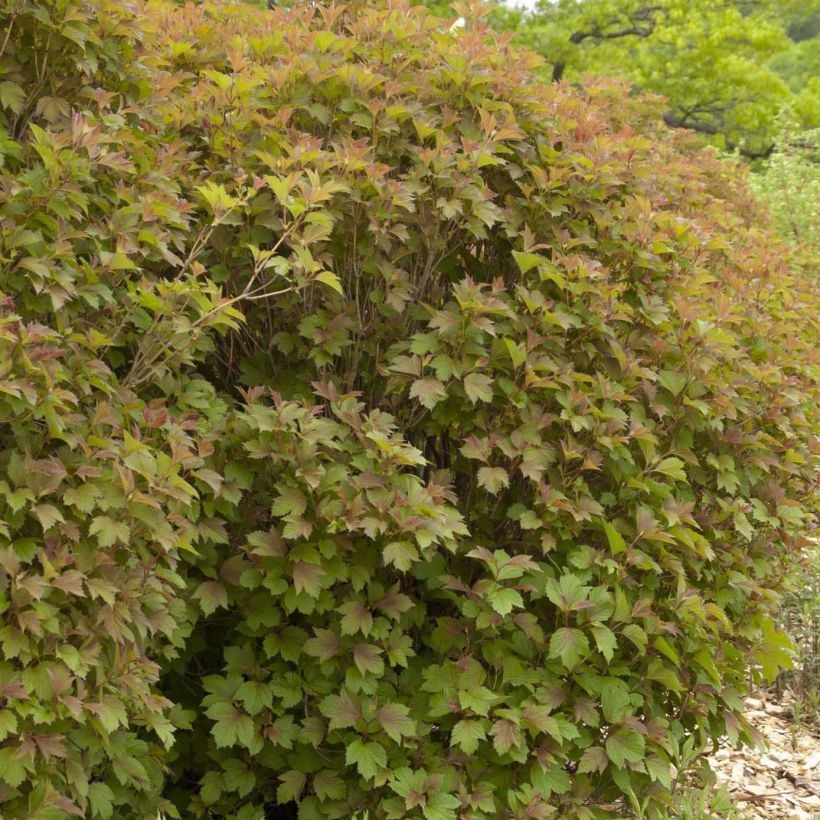

Plant habit
Flowering
Foliage
Botanical data
Viburnum
trilobum
Bailey Compact®
Caprifoliaceae (Adoxaceae)
American Cranberry Bush, High Bush Cranberry, Cranberry Viburnum
Cultivar or hybrid
Other Viburnum
View all →Planting and care
Viburnum trilobum and its varieties thrive in sunny locations. Plant them in moist soil from March to June and from September to December (excluding freezing periods). Any ordinary soil will do, as the plant shows no pH requirements and tolerates the presence of limestone. Its tolerance to wet but well-drained soils is excellent. However, provide drainage in very compact soils and enrich with compost over several years if your substrate seems particularly poor and rocky. Prune lightly after flowering, if necessary, mainly to remove dead wood or reduce the size of the plant.
Planting period
Intended location
Care
Planting & care advice
-
, onOrder confirmed
Reply from on Promesse de fleurs
Similar products
Haven't found what you were looking for?
Hardiness is the lowest winter temperature a plant can endure without suffering serious damage or even dying. However, hardiness is affected by location (a sheltered area, such as a patio), protection (winter cover) and soil type (hardiness is improved by well-drained soil).

Photo Sharing Terms & Conditions
In order to encourage gardeners to interact and share their experiences, Promesse de fleurs offers various media enabling content to be uploaded onto its Site - in particular via the ‘Photo sharing’ module.
The User agrees to refrain from:
- Posting any content that is illegal, prejudicial, insulting, racist, inciteful to hatred, revisionist, contrary to public decency, that infringes on privacy or on the privacy rights of third parties, in particular the publicity rights of persons and goods, intellectual property rights, or the right to privacy.
- Submitting content on behalf of a third party;
- Impersonate the identity of a third party and/or publish any personal information about a third party;
In general, the User undertakes to refrain from any unethical behaviour.
All Content (in particular text, comments, files, images, photos, videos, creative works, etc.), which may be subject to property or intellectual property rights, image or other private rights, shall remain the property of the User, subject to the limited rights granted by the terms of the licence granted by Promesse de fleurs as stated below. Users are at liberty to publish or not to publish such Content on the Site, notably via the ‘Photo Sharing’ facility, and accept that this Content shall be made public and freely accessible, notably on the Internet.
Users further acknowledge, undertake to have ,and guarantee that they hold all necessary rights and permissions to publish such material on the Site, in particular with regard to the legislation in force pertaining to any privacy, property, intellectual property, image, or contractual rights, or rights of any other nature. By publishing such Content on the Site, Users acknowledge accepting full liability as publishers of the Content within the meaning of the law, and grant Promesse de fleurs, free of charge, an inclusive, worldwide licence for the said Content for the entire duration of its publication, including all reproduction, representation, up/downloading, displaying, performing, transmission, and storage rights.
Users also grant permission for their name to be linked to the Content and accept that this link may not always be made available.
By engaging in posting material, Users consent to their Content becoming automatically accessible on the Internet, in particular on other sites and/or blogs and/or web pages of the Promesse de fleurs site, including in particular social pages and the Promesse de fleurs catalogue.
Users may secure the removal of entrusted content free of charge by issuing a simple request via our contact form.
The flowering period indicated on our website applies to countries and regions located in USDA zone 8 (France, the United Kingdom, Ireland, the Netherlands, etc.)
It will vary according to where you live:
- In zones 9 to 10 (Italy, Spain, Greece, etc.), flowering will occur about 2 to 4 weeks earlier.
- In zones 6 to 7 (Germany, Poland, Slovenia, and lower mountainous regions), flowering will be delayed by 2 to 3 weeks.
- In zone 5 (Central Europe, Scandinavia), blooming will be delayed by 3 to 5 weeks.
In temperate climates, pruning of spring-flowering shrubs (forsythia, spireas, etc.) should be done just after flowering.
Pruning of summer-flowering shrubs (Indian Lilac, Perovskia, etc.) can be done in winter or spring.
In cold regions as well as with frost-sensitive plants, avoid pruning too early when severe frosts may still occur.
The planting period indicated on our website applies to countries and regions located in USDA zone 8 (France, United Kingdom, Ireland, Netherlands).
It will vary according to where you live:
- In Mediterranean zones (Marseille, Madrid, Milan, etc.), autumn and winter are the best planting periods.
- In continental zones (Strasbourg, Munich, Vienna, etc.), delay planting by 2 to 3 weeks in spring and bring it forward by 2 to 4 weeks in autumn.
- In mountainous regions (the Alps, Pyrenees, Carpathians, etc.), it is best to plant in late spring (May-June) or late summer (August-September).
The harvesting period indicated on our website applies to countries and regions in USDA zone 8 (France, England, Ireland, the Netherlands).
In colder areas (Scandinavia, Poland, Austria...) fruit and vegetable harvests are likely to be delayed by 3-4 weeks.
In warmer areas (Italy, Spain, Greece, etc.), harvesting will probably take place earlier, depending on weather conditions.
The sowing periods indicated on our website apply to countries and regions within USDA Zone 8 (France, UK, Ireland, Netherlands).
In colder areas (Scandinavia, Poland, Austria...), delay any outdoor sowing by 3-4 weeks, or sow under glass.
In warmer climes (Italy, Spain, Greece, etc.), bring outdoor sowing forward by a few weeks.






























